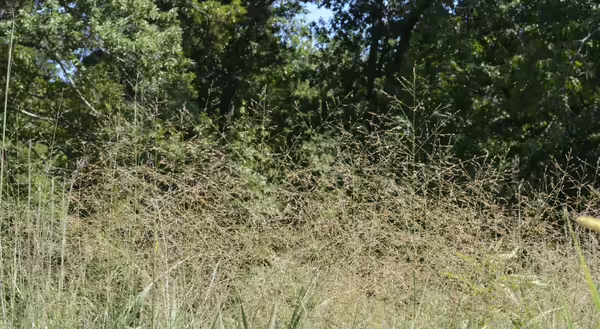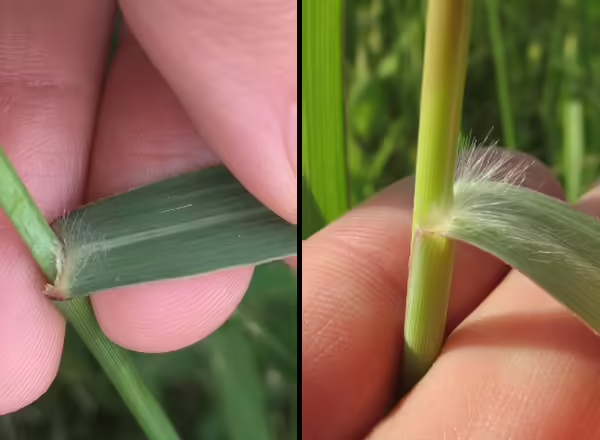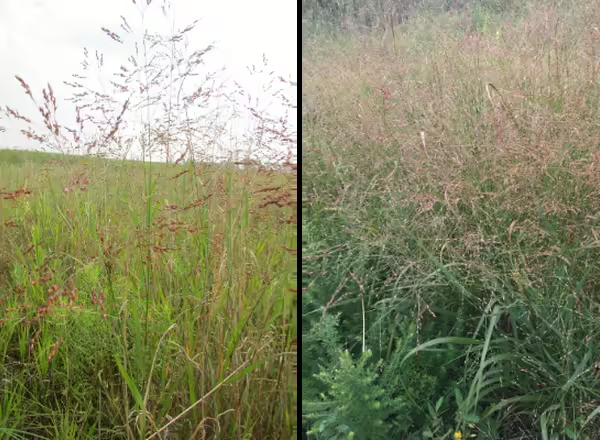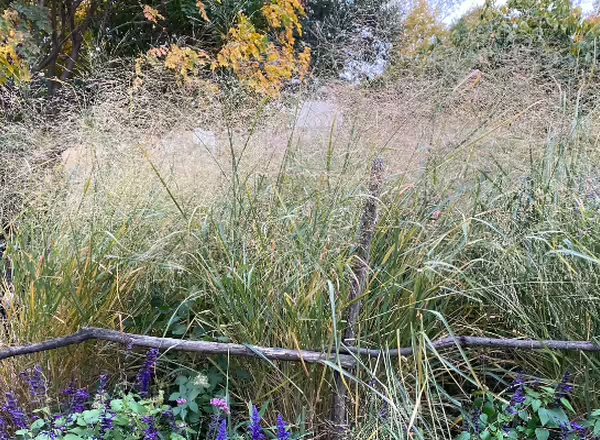
If someone asked me to name the most iconic plants of the tallgrass prairie, I would start with the grasses. Who could talk about a prairie without mentioning grass? The top three grasses that scream “tallgrass prairie” are Big Bluestem, Indian Grass, and Switchgrass. Why? These are all robust, tall species of grass that form the basis of tallgrass prairie plant communities in the Midwest. These grasses have deep roots and are built to withstand fire and grazing.
If you are looking to add a taste of the prairie to your home landscape, Switchgrass, Panicum virgatum, would be my top recommendation of those three species. Its bunching growth habit, showy seed heads, and fall interest make it a great choice.

Telling it apart from other tall grasses
Switchgrass can be found in almost every county in Illinois, in prairies, savannas, and bluff habitats. It is a bunchgrass that grows to about 6 feet in height. Switchgrass has a dense collection of hairs at the base of its leaf blades. I learned it as having a triangular shaped cluster of hairs, but sometimes it’s a stretch to see that triangle shape. I recently heard another expert refer to this characteristic as a “hairy armpit,” and that stuck with me way better! You can also find a membranous ligule amidst the hairs.
Bloom and fall interest
Switchgrass produces a very large panicle inflorescence that is open and airy. Usually about a foot tall, it has stiff branches and small spikelets, which can be green to red in color.
In the fall, the leaves of Switchgrass turn a straw color and curl tightly. Topped with their airy inflorescences, I think it has a whimsical appearance in the home garden.


Never miss a new post! Sign up for our email list.
ABOUT THE AUTHOR: Erin Garrett is a Natural Resources, Environment, and Energy Educator for University of Illinois Extension serving Alexander, Johnson, Massac, Pulaski, and Union counties. Erin develops and delivers high impact programming to adults and youth to help them develop an appreciation for natural resources and to empower them to make small changes to positively impact the environment. Erin’s programming focuses on why homeowners should consider choosing native plants, how to support native pollinators, how to identify grasses, how to identify and manage invasive species, and developing an appreciation for prairie ecosystems.
ABOUT THE BLOG: Grasses at a Glance dives into grass identification, focusing on tips and tricks that make grass identification possible. Get information about native and non-native species, how to tell look-alikes apart, and which grasses you can find in Illinois.